Patience and Partnership
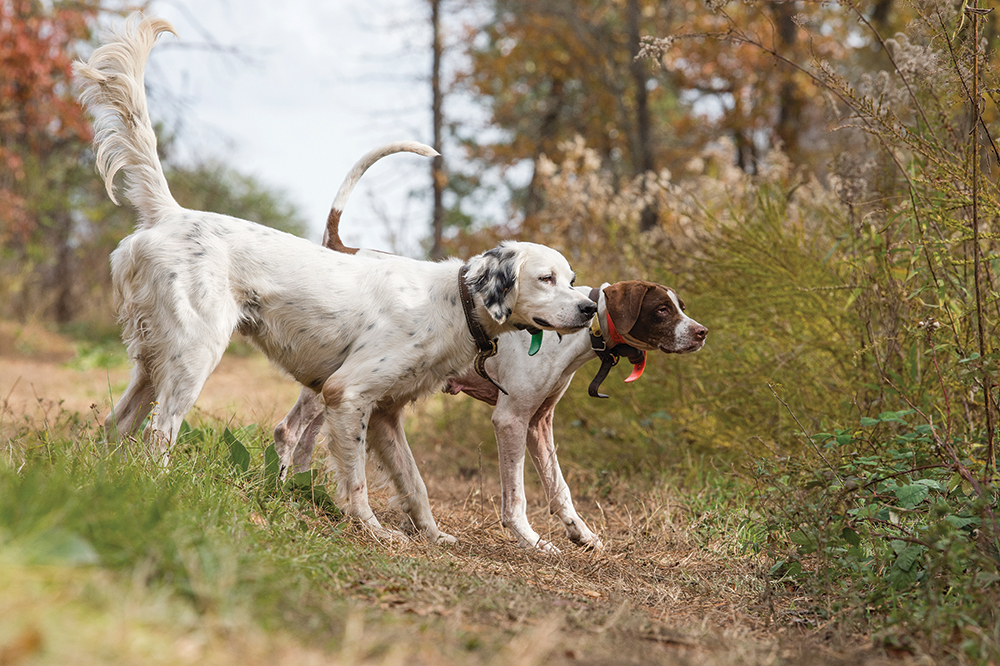
Harley was trained from a book. He came from show lines, chosen because I wanted a German shorthair and there was a litter advertised in the local paper. I knew nothing about picking a gun dog and less about training one. So I read a few chapters of Kenneth Roebuck’s 1983 book, Gun-Dog Training: Pointing Dogs and figured it couldn’t be hard to train a bird dog. We’re smarter than they are, right?
At his first live bird training session, Harley morphed into a high-speed vacuum and hoovered the bird out of the grass faster than the wingbeats of a drumming grouse. He ran 50 yards away with the bird locked in his jaws. I called, whistled, cajoled, then sprinted back to the house and grabbed a box of Milk Bones. No luck. No matter what I did, Harley and his bird maintained a safe distance. Sweating with exertion and despair, I finally flopped down in the grass and watched my dog eat the quail beak to toe. Only then could I leash and drag him home, where I immediately ordered a Tri-Tronics Classic 70 training collar. That was my entry into the first stage of being a bird-dog owner.
Hunting with Harley became an enterprise of compromise. With help from the e-collar, he learned to hold his points fairly well, but became a blur of motion once the bird left the ground. He had a good nose and strong prey drive. He would fetch a bumper but saw no reason to fetch a bird, since his hunting partner (me) was perfectly capable of picking it up herself. He seemed to understand that I might have a hard time finding it, so he’d hunt dead and stay by the downed bird until I arrived. Looking back, though, hunting with Harley was always a delight. Anything he did was a gift and a wonder. With no expectations to be let down, I thought everything he did was outstanding. My mind was blind to all the things I didn’t know about, so disappointment wasn’t an option.
In the late 1970s, Dr. Robert Jackson and Dr. Robert Norton of the University of Wisconsin-La Crosse studied more than 1,000 hunters and identified five stages most hunters pass through over the course of their lives. Some hunters skip a stage or blend two into one, but in general these stages reflect how we approach the hunt and what determines our sense of a hunt’s success.
Hunters who own bird dogs and have done so for a while agree there is a vast difference between training and hunting their first dog and doing it after a decade or more. Hypothesis: Taking into account both training and hunting, bird-dog owners go through five stages similar to those defining a hunter’s evolution.
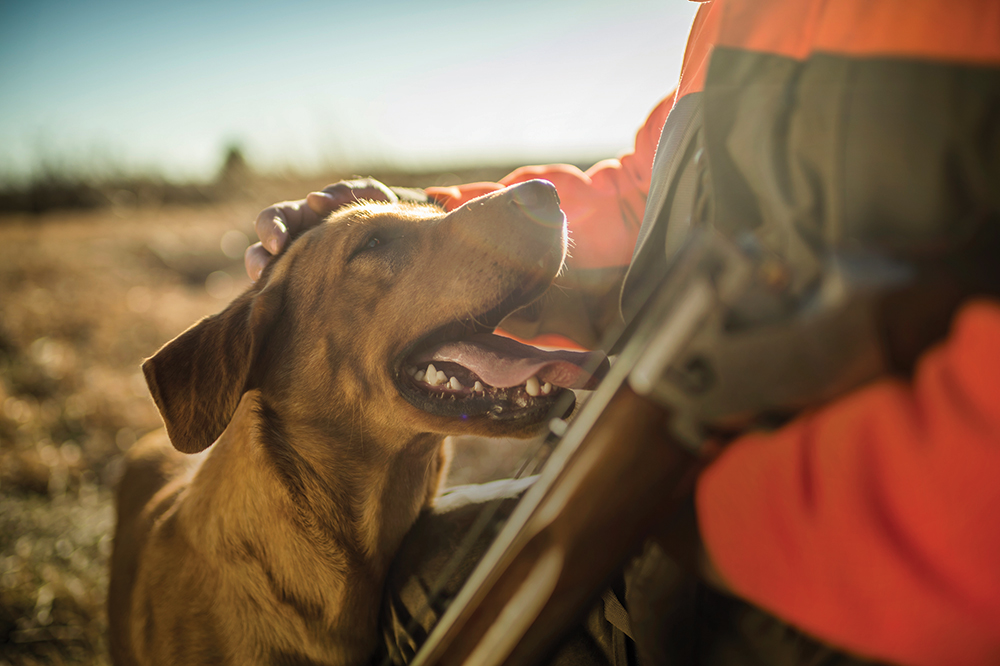
The Discovery Stage: The first hunter’s stage is the Shooting Stage, characterized by eagerness and the desire for shooting opportunities. Engaging targets is the priority. The hunter’s skills are not yet proficient, and the focus is on pulling the trigger.
The bird-dog owner’s equivalent stage could be called the Discovery Stage. While the hunter’s training and handling skills are still in the learning phase, anything the dog does right is considered a win. Any birds found, any point, any flush or retrieve that contributes to the hunt is appreciated. Newness and fun override critical evaluation of the dog’s behavior. In this stage, problems are excused, as in, “Well, he may have busted the bird, but he stopped on the flush to watch it,” or “My dog won’t fetch woodcock because they taste like liver.”
In the Discovery Stage, bird contact is very important; killing the game is an extra benefit. The upside is that the inability to discern good dog work from poor keeps the enjoyment level high. The downside is not fulfilling the dog’s potential and not being aware of risks, such as having an out-of-control dog chase a bird onto a highway or losing wounded game because the dog won’t track or retrieve. Harley and I were poster children for the Discovery Stage.

The Proving Stage: The hunter’s second phase is the Limiting-Out Stage. Score keeping is paramount. Success is measured by birds taken, and bagging a limit is the goal.
For bird-dog owners, the second stage would be the Proving Stage. In that phase, with midlevel training, the dog is working productively to help the hunter. The pointing dog will point but isn’t fully steady. The flushing dog understands scent but may work out of gun range. The retriever is reliable on birds dropped in clear view but not on long or blind marks. Putting a bird in the bag is the measure of what the dog can do. Limits aren’t necessary, but harvesting game is the goal, proof of the dog’s and the handler’s skills.
The biggest gain in this stage is that the dog’s hunting abilities—those it was bred for—are being used in a more purposeful, intentional way than in the Discovery Stage. The danger is in focusing too much on birds in the bag, on “proving” the dog. The emphasis is on counting birds, counting points, counting retrieves. The hunt’s success is tallied through metrics, an emotional roller coaster of quantifiable wins and losses.
Jason Carter, a German shorthair breeder and professional dog trainer, is passionate about hunting with his own dogs and sharing that experience with friends and family. Reviewing the stages hypothesis, Jason noted, “The phases we go through are dependent on our previous mistakes, our understanding of our dog’s potential, dedication to our training, the knowledge we possess, the resources around us, and our understanding of what a finished bird dog should do.”
He pointed out that, having seen amateur trainers ebb and flow with their dogs, he believes that belonging to a training organization can give a clear understanding of where to go in the training and what to train toward, both of which accelerate the bird-dog owner’s evolution through the first few stages. “Without that level of structure, most bird-dog-owning hunters are stage one or two, August-September crash course trainers for a long time.”
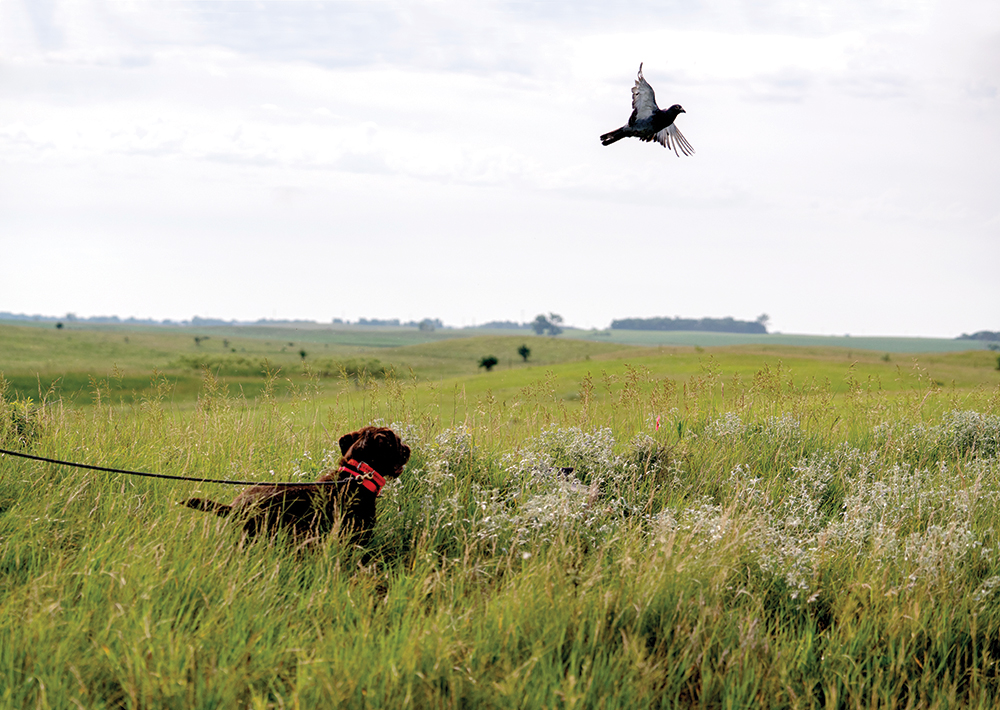
The Finishing Stage: The Trophy Stage is the hunter’s third phase. Selectivity ups the ante by qualifying targets—shooting only trophy deer, turkeys with beards over 8 inches, pheasant with the longest tails, and so on. The Trophy Stage mindset is quality over quantity.
Parallel to that, the bird-dog owner’s third stage would be the Finishing Stage. Here, the dog is trained to a “finished” level. The hunter understands the big picture, how the dog’s skills must be honed individually and then reassembled into a hunt. The pointing dog is steady until released, whether or not the bird is shot. The retriever not only takes long marks and makes blind retrieves, but also follows hand or whistle commands. The flushing dog works in gun range, or, braced with a pointer, will heel until sent to flush. In this stage the dog work is starting to take precedence over filling the game bag. The goal of the hunt is to see the dog work as an end in itself.
Wildlife biologist, avid hunter, and angler Meadow Kouffeld trains and handles Deutsch Drahthaars. Meadow skipped the first stage, having grown up with hunting and stock dogs. She says her first Drahthaar changed everything. “I had very high expectations with my first Deutsch Drahthaar, although I was not perfect and the whole pointing- and bird-dog thing was new to me. So the pointing aspect blew my mind, and I lacked confidence in the dog.”
Meadow began testing her dogs in the German system and admits to having been really hung up on testing. Describing her evolution through the Proving Stage and Finishing Stage, she said, “I used to be so concerned about messing dogs up by hunting them. All I was concerned about were test scores and test performance. Now I hunt dogs more than I train to test. I do some reinforcement of training, but I am not as concerned about perfection. Rather I am concerned about a dog that is happy, enjoys to work, and is a partner.”
Meadow talked about working her dog Meine on different types of hunts. “Over several grouse encounters we had the pointing down. It was such a cool experience to be so connected with her and be able to loosen up and relax,” says Meadow. “The following weekend I was able to leave her at a ‘down stay’ and jump shoot some wood ducks on several small beaver ponds. I was very pleased that she stayed and then was able to make good retrieves on downed birds that she had not marked.”
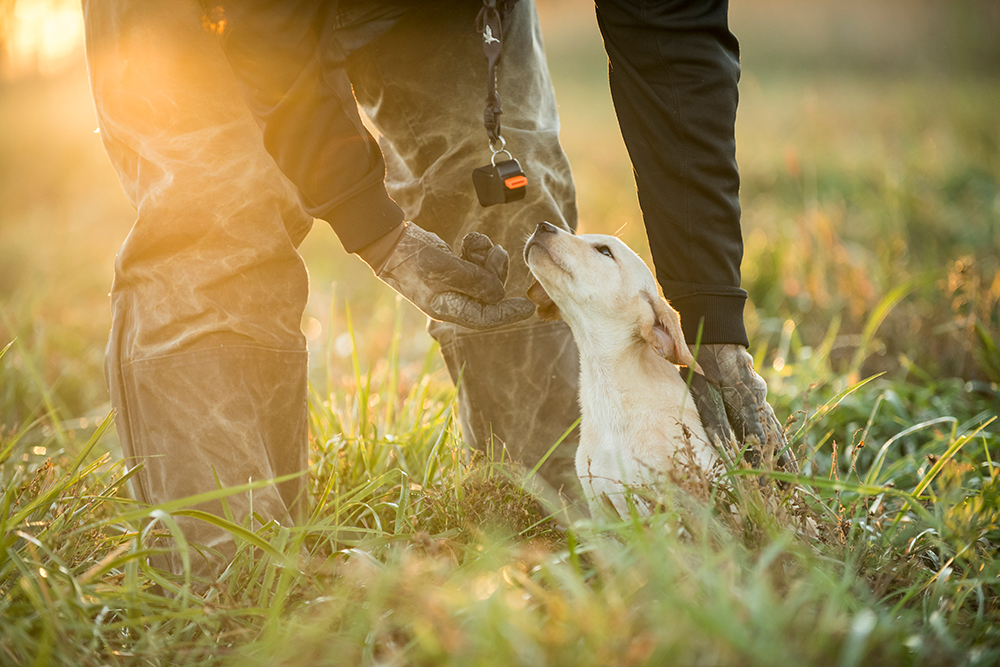
The Method Stage: In the hunter’s next stage, the Method Stage, strategy and equipment define success. How the game is taken is more important than the taking itself. That could be the deer hunter switching from a compound bow to a recurve, or the waterfowl hunter only shooting decoyed ducks, with no pass shooting. Considerable time may be spent scouting—putting turkeys “to bed” to see where they roost, or reading the signs of woodcock splash and grouse drumming logs. Here, game successfully taken is valued most because of advanced levels of planning.
Method defines the bird-dog owner’s fourth stage as well. The Method Stage finesses the hunt, experimenting with a dog’s abilities such as asking a steady dog to release and flush, teaching the flusher to sit on the shot, or requiring bracemates to honor each other’s points. Training in this stage is analytic and appreciative of the process. The hunt now has a broader scope, exploring strategies and possibilities.
In the Method Stage it becomes evident that, through experience, the dog has learned things on its own that couldn’t be taught in training. The handler learns to trust the dog and think of the hunter and dog as more equal teammates.
Terry Wilson, founder of the Ugly Dog Hunting Company and a judge for the North American Versatile Hunting Dog Association, has evaluated bird-dog handlers in all stages. Having evolved through the stages himself, Terry cited a perfect example for the Method Stage with Scrub, his first German wirehaired pointer. Hunting pheasant in long strips of milo on a South Dakota ranch, Scrub would hold on point until Terry got close.
“Then he’d dash out of the strip, race down its side, and dive back in to pinch the bird,” Terry described, pointing out that he learned not to whoa Scrub when he broke point. “If the gunners got close to the end of the strip, Scrub actually would race to the end, then pace back and forth sideways, paw over paw, facing us like a blocker. Running birds couldn’t scoot out and would be forced to flush well in gun range. I couldn’t have taught Scrub to do that. Somehow that big moose of a wirehair understood the mechanics of the hunt so well he figured out what to do beyond what he had been taught.”
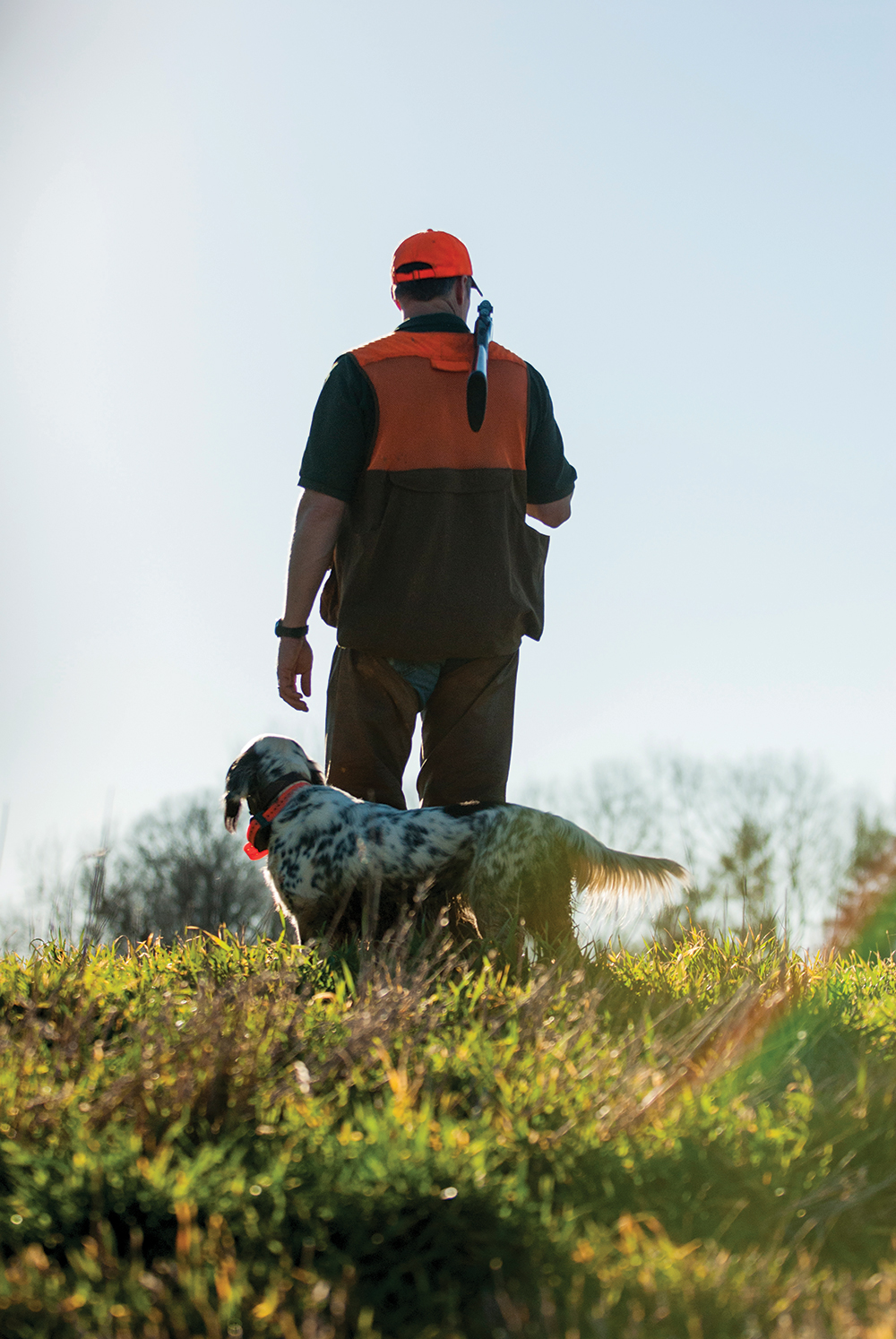
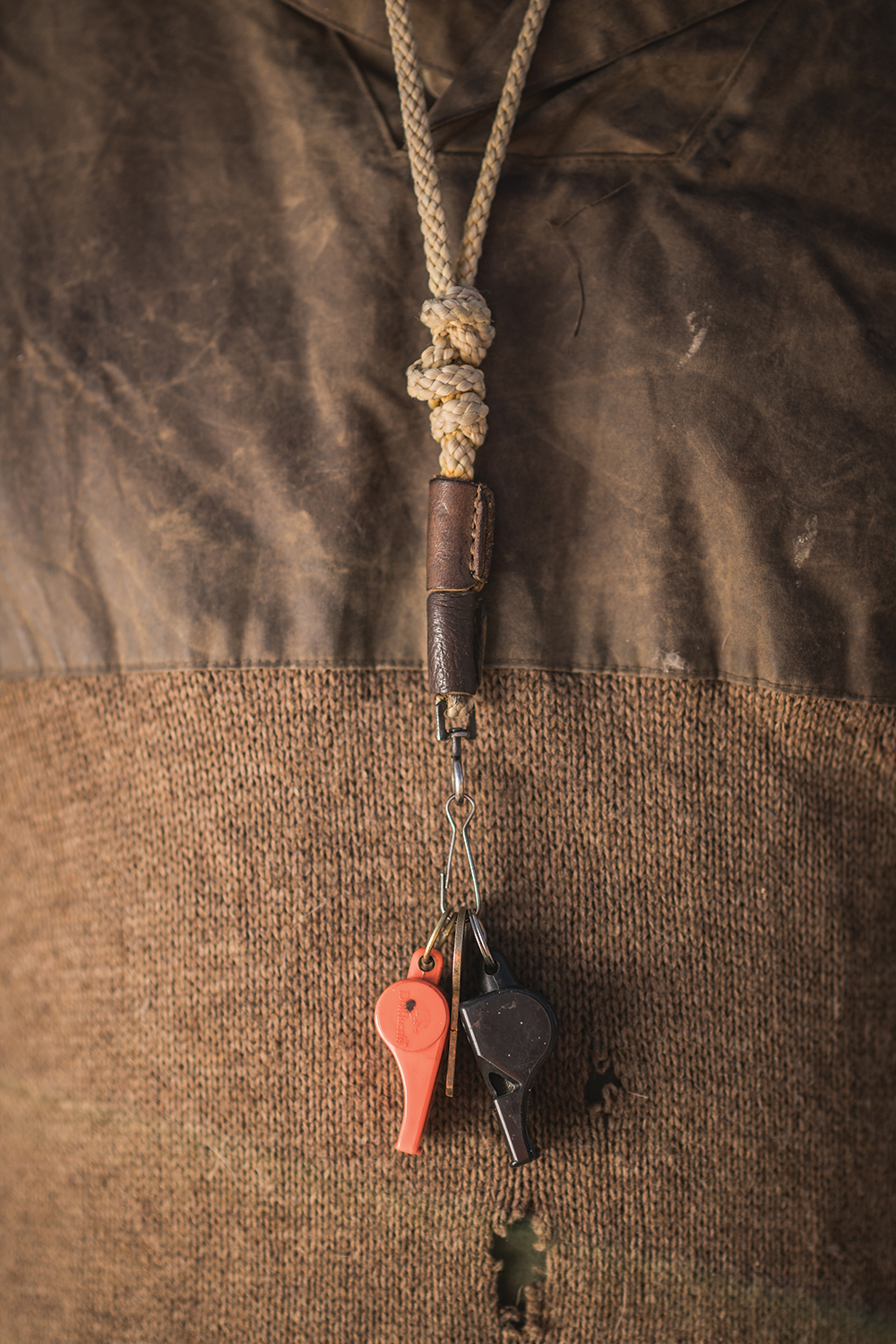
The Partnership Stage: The final hunter’s stage has the gender-biased title of Sportsman’s Stage. This phase puts a premium on the total hunting experience. The habitat, wildlife, camaraderie, physical exercise, and the outdoors are more important than shooting the game. The hunt is a success purely for the fact of it taking place.
The fifth phase for bird-dog owners is an easy parallel. In the Partnership Stage, the bird-dog owner just loves being out there with the dog, even if the dog messes up sometimes. Training is pretty much over. Hunters in this stage revel in their dogs’ athleticism and abilities and often relish introducing others, particularly young people, to the fun of hunting with dogs. The hunter and dog have “history”—the memories of shared hunting adventures that help shape or inspire each new hunt.
In this stage, being outdoors, searching for birds, and shooting at birds are all deemed successful because they are the means to revel in the hunter-dog bond. This stage showcases middle-aged and older dogs. Disappointment is rare because of a deeper understanding of the dog, its training, and its unique personality.
“I agree with the idea of a bird-dog owner evolving through these stages. To me, the final stage is the most satisfying,” Terry said. “Usually the hunter needs to be older, and it can take six or seven years for the dog to get there. Now when I’m out hunting, my dogs are on autopilot. I don’t need to give them a lot of commands or direction—they know what to do. That would be hard for a first-time handler, but with experience, it is possible.
“As a hunt test judge, I find one of the most enjoyable things to see in the field is a dog that almost anticipates what its handler wants. It’s like a well-choreographed dance. You don’t see many like that, where dog and hunter are totally connected. When you do, it is beautiful.”
The stages hypothesis holds up with a nod to variables such as how much hunting the hunters do, what level of training they seek, and what the innate abilities of each dog are. But the hypothesis needs an addendum: The stages of a bird-dog owner’s evolution are paralleled by a set of micro-stages for each dog as it grows from puppy to mature hunter.
My eight-year-old shorthair and I are in the Partnership Stage. Our hunt is fluid. I can read his body language; he knows how I move and what I expect of him. We always have fun in the field. But with the one-year-old pup, I’m in the second stage, past loving everything she does that is remotely birdy. I want her to have successful bird contacts. When she crunches a quail on her retrieve, I cringe. When she holds a point solid until I flush the partridge, Champagne corks pop in my mind.
Within the lifetime evolution of a bird-dog owner, smaller evolutions turn each gangly, bird-chasing newbie into an accomplished hunting partner. If we couldn’t revisit those early stages of our evolution, it is a good bet the final stages wouldn’t mean as much as they do.
























